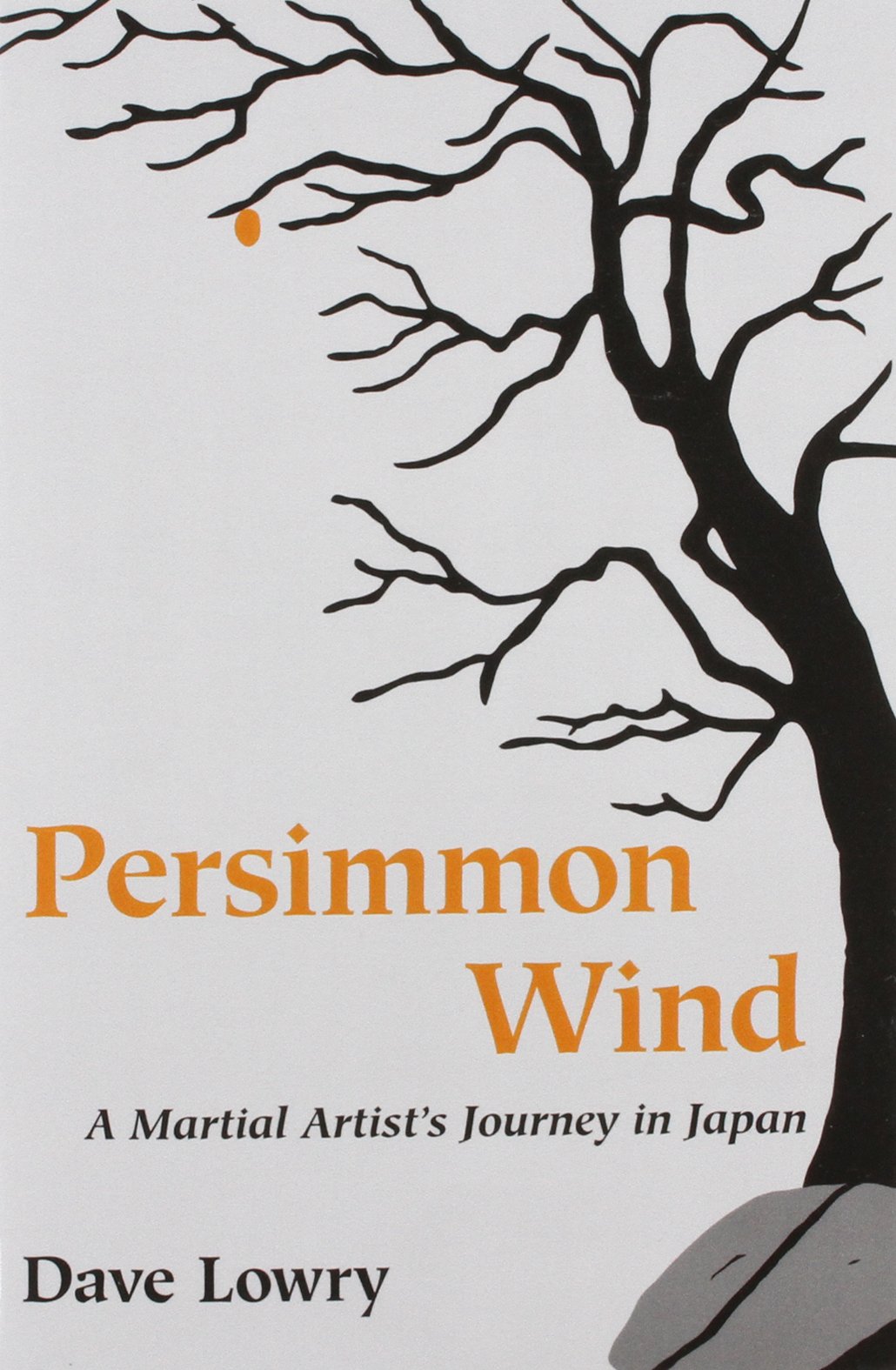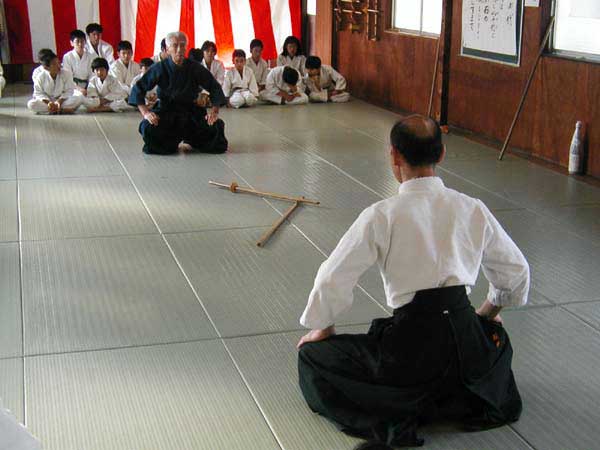I was first introduced to Ellis Amdur's writing many years ago when I read the article "Hiding in the Shadows of the Warrior" that had been put up on
Koryu.com. That article had a profound affect on me and fueled my interest in koryu budo. I scanned the Internet reading anything I could of Amdur's concerning martial arts. In time I read reviews about his first edition of
Dueling with O-sensei: Grappling with the Myth of the Warrior Sage but never got the opportunity to read it myself. Just recently I have finished reading his revised and expanded edition.
It is a book made up of essays that are grouped into chapters following a particular theme. There is so much in this book that I'm not even sure how I'm going to tackle it.
I will start by giving my overall impression of the book. This is one of the best books I have read on the Japanese martial arts. Amdur writes honestly and with conviction, not only about his experiences with martial arts but on the human condition as well. What makes the book so compelling are the personal accounts from the author and how he links them to Japanese concepts. Amdur doesn't shy away from showing peoples' faults including his own and I think it is this quality that helps the reader reflect on one's own actions and motivations for being in and around the martial arts.
As with
Old School, I will break the book down into chapters and try to cover main themes. There are 23 chapters in the book so at times I may combine some of them simply due to the amount of content that the book contains.
Chapter 1: The Knights of the Mouldy Rope.
Amdur talks about his introduction to Aikido and Terry Dobson. The majority of this chapter is about Terry and who he was as a man and his profound influence he had on the author. It is a great piece of writing and I thoroughly enjoyed it.
Chapter 2: Ukemi from the Ground Up.
This chapter discusses ukemi (receiving body) by taking us through the role of two people training and how these roles have changed over time. He discusses taking ukemi in the context of classical budo and then how that changed in Kano's Judo. He discusses Daito-Ryu and Aikido and how the roles in the training have changed again. Overall Amdur appears to be saying that Ukemi is different things in different contexts.
Chapter 3: My First Days at the Headquarters Dojo. and Chapter 4: The Best of Their Time.
Here Amdur tells his experiences at Aikido's Hombu Dojo. He writes about his experiences meeting the Doshu of the time, Ueshiba Kisshomaru and his son, Ueshiba Moriteru. The fourth chapter gives Amdur's perspective on a number of high level practitioners of the time; Osawa Kisaburo, Arikawa Sadateru, Tada Hiroshi, Yamaguchi Seigo, and Nishio Shoji. The author gives the reader a personal insight into the character of these men.
Chapter 5: Forever Young.
This chapter centres around Kuroiwa Yoshio. A man Amdur obviously has a lot of respect for based on his writing.
Chapter 6: A Conversation with Daito-ryu's Other Child.
Here we read about Hapkido and its relationship with Daito-ryu and Aikido.
Chapter 7: Atemi: Striking to the Heart of the Matter.
Amdur writes a small chapter defining atemi, what it is and what it means for aikido practice.
Chapter 8: Did You Ever Meet O-sensei? O-sensei Who?
O-sensei, defined as great teacher does not always mean Ueshiba Morihei, founder of Aikido. Amdur gives some great examples of people that could be referred to as 'great teacher'.
Chapter 9: Tenchi: Head in the Clouds and Feet in the Muck.
This is a fascinating chapter where Ambur attempts to debunk the Myth of the Warrior-sage, Ueshiba Morihei and tell the man's story as it really was. It is a large chapter but well worth the read. Anyone who practises Aikido should read this chapter. It is eye-opening and makes a lot of sense. Earlier publications by other authors paint Ueshiba as almost god-like. This chapter treats him like a normal man who finds himself in extraordinary situations at times.
Chapter 10: Toward Simple Morality - Or How Come Something So Fine Sometimes Turns So Ugly.
Here Amdur tackles the topic of abuse in the martial arts. Sexual abuse of children, physical abuse of students of any age and abuse of trust. Aikido in particular lends itself to physical abuse due to the junior-senior relationship set up in the dojo. Amdur's expertise in dealing with this issue is obvious in his writing. It is a tough chapter to read through and sickening in places as the author mentions cases where such abuse has occurred. Despite the content, Amdur's honest writing makes the reader think and reflect on their own practise. One line stands out for me in particular, "Be careful with whom you choose to study. You will become who they are, and if you haven't chosen wisely, you'll suffer and other people will, too."
Chapter 11: Otoko (Manhood)
This chapter discusses what it means to become a man, in the Japanese context. It is perhaps a way to understand why some interactions in the dojo are set up they way they are and why it can be confusing for Westerners to understand. Amdur compares the Japanese and Western mindset and settles somewhere between the two.
Chapter 12: Anyone Can Be O-sensei In One's Own Movie.
This is a personal account of the author trying to be the hero of his samurai movies and discovering that he should stick to fighting his own battles.
Chapter 13: The Ring is Where You Draw It.
I'm not completely sure of Amdur's theme in this chapter. The collection of essays appear to be about taking the martial arts out of context. The essays are interesting and remind the reader that the lessons you may learn (or not) in martial arts can be applied outside the dojo.
Chapter 14: So How Tough Do You Want to Be When You Grow Up?
This chapter discusses that old chestnut - which martial art is better? Amdur writes about how every martial art makes assumptions that fit into their particular training paradigm. This means practitioners learn how to fight within those parameters and get very good...in those parameters. So what does Aikido promise?
Chapter 15: Setsuninto-Katsujinken.
This chapter is a hard-hitting tale of making hard choices and living with the consequences. Setsuninto (the sword that takes life) and katsujinken (the sword that gives life) are ideas representing the use of the sword for malicious ends opposed to its use for protection of others. Amdur gives the reader a scenario that ends tragically and he had a say in the outcome. Not for the light-hearted.
Chapter 16: Hiding in the Shadows of the Warrior.
I have so many good things to say about this chapter. As I said earlier, this essay was the first piece of writing I had read of Ellis Amdur's and it encouraged me to continue to search for a koryu to train in. War and fighting is ugly, decisions must be made and ultimately you are left dealing with your own demons. It is a fine balance and often there are no perfect answers.
Chapter 17: Aiki: A State of the Union.
For me, Aiki is such a loaded term and here we find Amdur trying to define it. Aiki has been interpreted in many ways over the years and Amdur's take on it comes from a second-hand quote from Ueshiba, "Aiki is a means of achieving harmony with another person so that you can make them do what you want." Another chapter I believe all aikidoka should read.
Chapter 18: Aiki is Not Always Pretty.
This chapter is a personal account of the author's when dealing with an angry man with a gun. How does one de-escalate the situation so that the least amount of harm occurs?
Chapter 19: Cutting the Circle.
Amdur writes about irimi and tenkan and then, as he likes to do, adds a personal account to emphasize his points.
Chapters 20, 21 and 22
In these short chapters Amdur looks at three Japanese terms; Musubi (tying together), Bushi no Nasake (warrior's compassion) and Kamae (stance).
Chapter 23: Oniisan (Elder Brother).
This chapter discusses the author's earlier times in Japan while training and living with Kuwamori Yasunori. It is a tribute, really, to a man Amdur regarded with respect, in his own words he says, "I reflect how much finer a man he was than many of the pirates and rogues that I admired so much,"
At the back of the book is a comprehensive glossary of Japanese terms.
As you can see, the book covers a lot of ground and although Aikido is much the focus of this book, it is the tales of people that bring it alive.
To date, this has been the best book I have ever read on budo and especially, Aikido. Highly recommended.




















